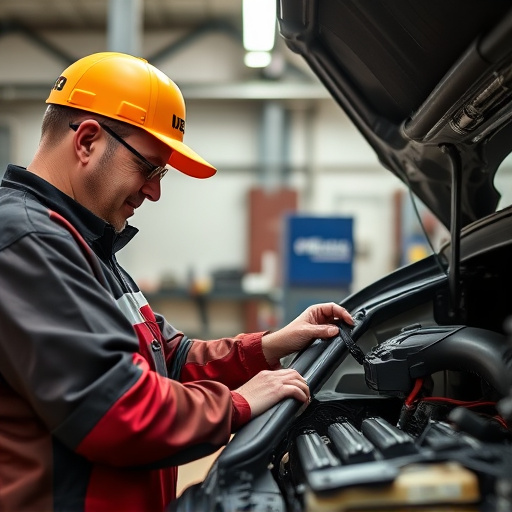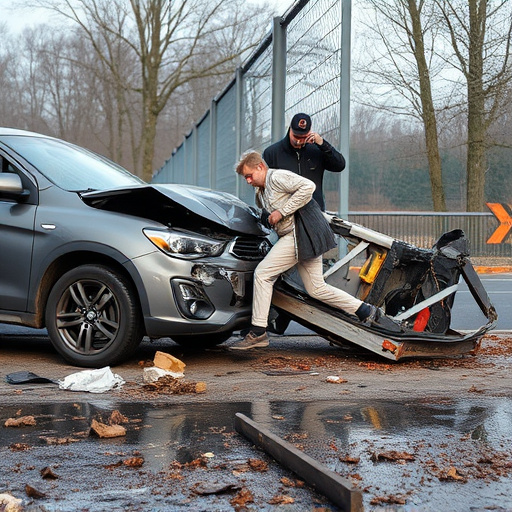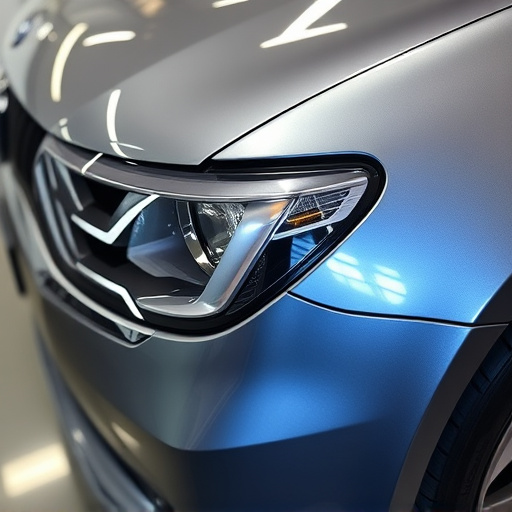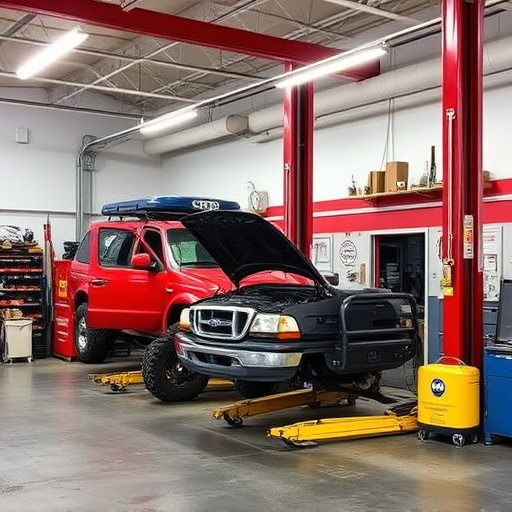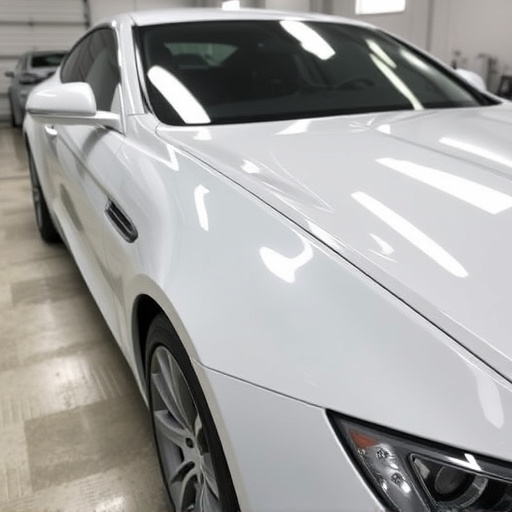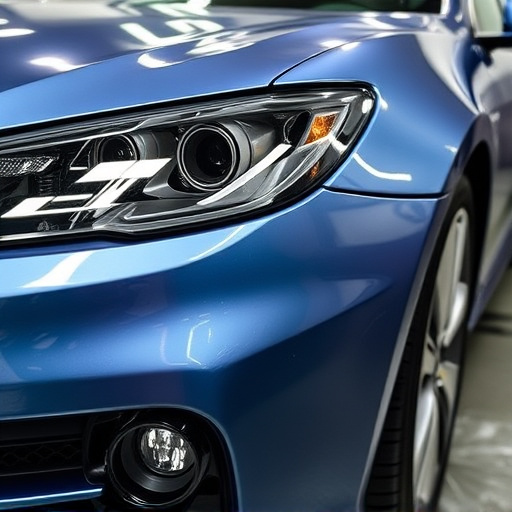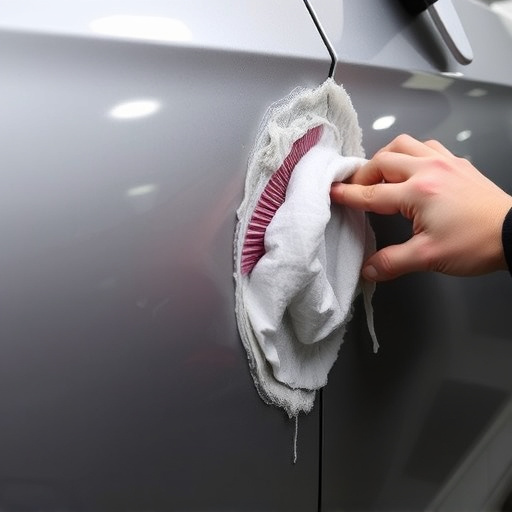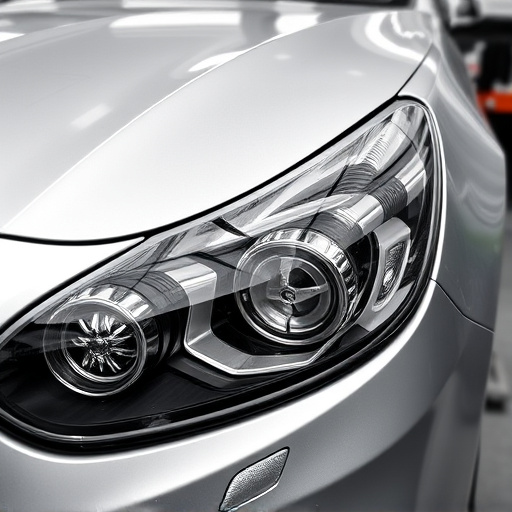Tesla Model S front end repairs are crucial for safety and performance after damage, from minor dents to structural issues, often due to hail or varying weather conditions. Structural Recalibration, a key procedure, involves precise realignments of components using modern equipment. Rigorous testing post-repair ensures optimal handling and responsiveness through advanced diagnostic tools and simulations. Specialized collision centers offer fleet services and extensive paint repairs for top-condition vehicles.
Tesla Model S owners often encounter front end issues, requiring careful attention and expert intervention. This article delves into the intricacies of a specialized repair process known as structural recalibration, designed to address these challenges. Understanding common front end problems specific to the Tesla Model S is crucial. We’ll explore how structural recalibration works, from identifying misalignments to precise adjustments for optimal performance. Post-repair testing ensures top-tier results and enhanced safety.
- Understanding Tesla Model S Front End Issues
- Structural Recalibration: The Repair Process
- Post-Repair Testing and Optimization
Understanding Tesla Model S Front End Issues
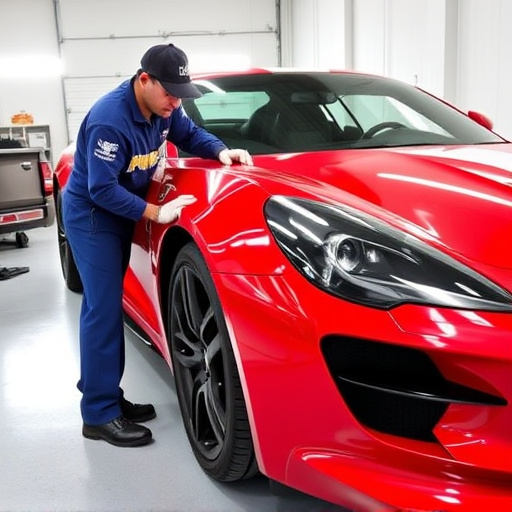
The Tesla Model S, an iconic electric vehicle known for its sleek design and advanced technology, is not immune to front-end damage. Whether it’s a fender bender or more severe car collision repair, understanding the intricacies of the Model S’s front end structure is crucial. Many issues can arise, from minor dents and dings to more complex structural damage, requiring precise Tesla Model S front end repair techniques.
Hail damage repair, for instance, can be a common concern for Model S owners, given their vehicles’ exposure to varying weather conditions. Autobody repairs on the Model S front end necessitate a thorough assessment to identify and rectify problems that may affect the vehicle’s overall stability and safety. Proper structural recalibration is key to ensuring the car’s performance and handling remain optimal after any collision or repair process.
Structural Recalibration: The Repair Process
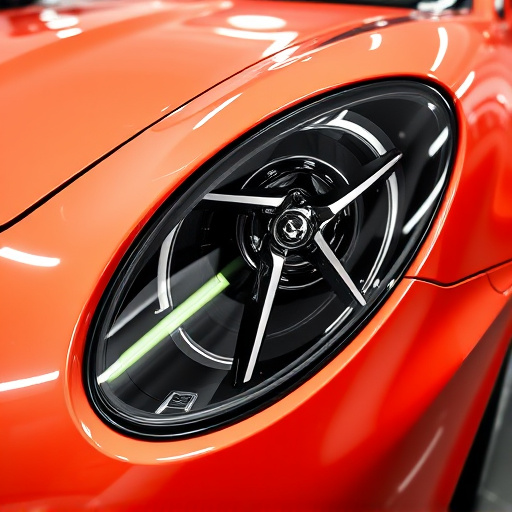
When it comes to Tesla Model S front end repair, Structural Recalibration stands as a pivotal component in the process. This advanced procedure involves precisely realigning the vehicle’s structural components back to their original specifications after any impact or damage. It’s akin to restoring a symphony to its harmonious state, ensuring every panel, joint, and frame is correctly aligned for optimal performance and safety.
The repair process begins with meticulous inspection using state-of-the-art equipment. Technicians identify the affected areas and precisely measure the degree of misalignment. Subsequent steps include careful disassembly, structural adjustments, and reassembly. This meticulous approach is crucial for addressing not just visible damage but also hidden distortions that could compromise the vehicle’s integrity. For those relying on professional collision repair services, fleet repair services, or even specialized Mercedes Benz collision repair, Structural Recalibration guarantees a restored Model S that meets both aesthetic and safety standards.
Post-Repair Testing and Optimization
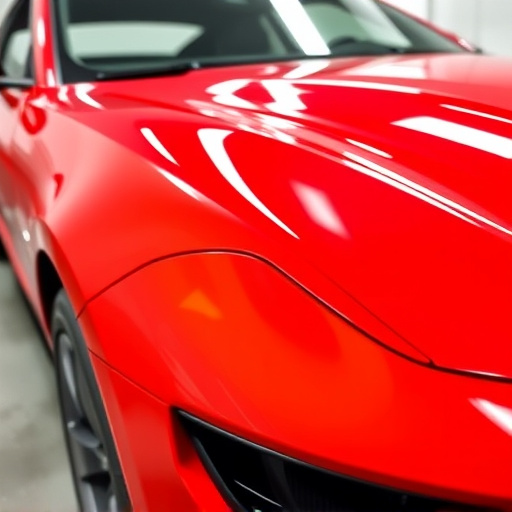
After a Tesla Model S front end repair, comprehensive testing is conducted to ensure optimal performance and structural integrity. This involves utilizing advanced diagnostic tools to check for any discrepancies or issues that may have arisen during the repair process. The testing phase includes both virtual simulations and real-world driving conditions to assess how the vehicle handles and responds under various stresses.
Through this meticulous evaluation, technicians can fine-tune and optimize the car’s systems, including its steering, suspension, and alignment. This ensures that the Tesla Model S not only meets but exceeds safety standards, providing a seamless and enjoyable driving experience. For fleet repair services or more extensive car paint repairs, specialized collision centers are equipped to handle complex cases, ensuring every vehicle leaves the shop in top condition.
The intricate process of repairing a Tesla Model S’s front end involves more than just surface-level fixes. By employing structural recalibration, technicians can address underlying issues, ensuring the vehicle regains its optimal performance and safety standards. This comprehensive approach to Tesla Model S front end repair not only enhances driving dynamics but also underscores the brand’s commitment to innovation and precision engineering.

